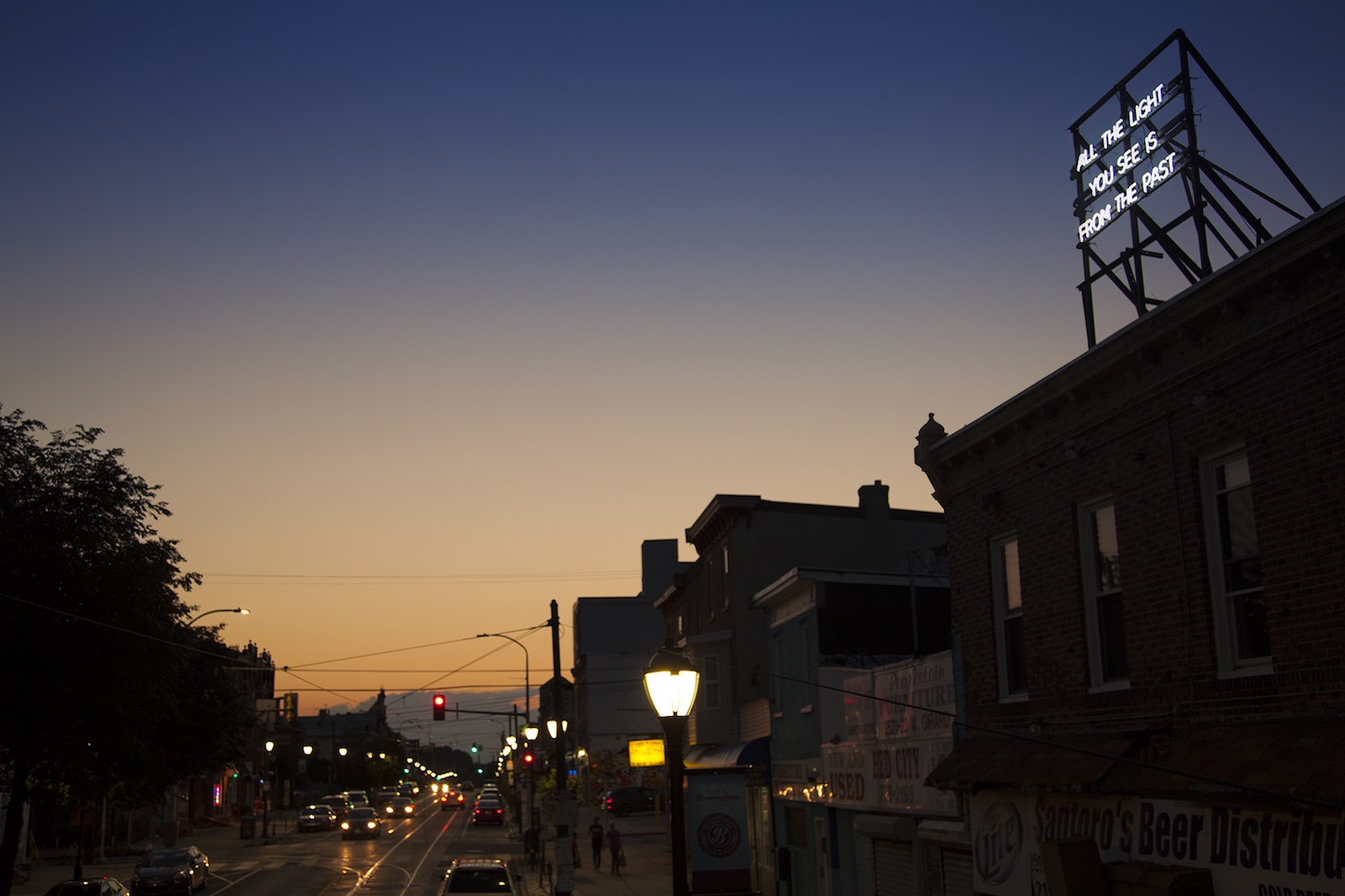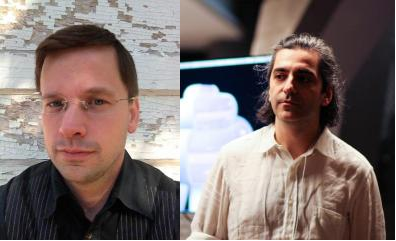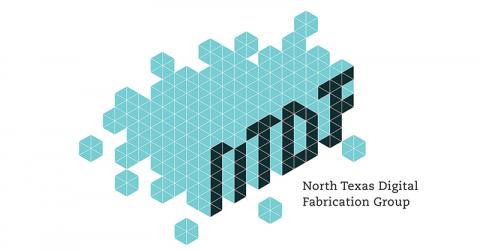- Search:
-
- Quicklinks:
Projects
- iARTA Home
- Participants
- Projects
- Classes
- Facilities & Resources
- ART-TEC
- MÖBIUS
- Hybrid Arts Laboratory [HAL]
- News
- Contact
Augmented Reality Concert Hall

Drew Schnurr, Assistant professor in Composition and Media Arts, has collaborated with various music faculty and artist Jenny Okun to produce the Augmented Reality Concert Hall, an interactive app for tablets and smart devices that seeks to use augmented reality to create a unique interactive music experience. ARCH I, the first iteration of the project, utilizes a two-dimensional poster that is recognized by the app, which then allows the user to interact with pre-recorded videos of performers in modular musical performances.The interactive interface enables a unique performance of a selected piece, molded by the curiosity and creative agency of the listener in real time. By giving individual audience members limited control over their musical experience, Schnurr's project subverts the traditional divisions of performer, composer, and audience and enables the audience member to assert themselves as a fundamental part of the creative process.
Using compositions by Joseph Klein, Kirsten Broberg, Bruce Broughton, Sungji Hong, and Drew Schnurr, ARCH's approach to musical structure is both modular and highly mutable, allowing users to control individual musicians in complex and interlocking layers. As the app populates the screen with performers, the user's environment is augmented and transformed into a musical performance space. By using preexisting space and augmenting it with virtual performers, ARCH seeks to increase audience immersion and blur the binary between virtual space and physical reality.
Future plans for ARCH include developing experiences for wearable AR devices that heighten this sense of immersion and enable more dynamic and varied musical experiences in a variety of spaces. Other avenues of exploration for ARCH II and beyond include utilizing three dimensional spaces, site-specific performances, and democratic audience experiences, where user data is collected and interpreted to dictate large-scale performances.
Drew Schnurr serves as the project leader and artistic director of ARCH. Other major contributors include composition area graduate assistants Mike Smith, an early technical assistant and consultant; Jake Thiede, Unity programmer and technical assistant; and Rachel Whelan, video and audio production manager.Additional contributions were made by Gayatri Sravani, computer scientist and technical assistant.
Sonification of Solar Harmonics (SoSH) Project

The Sonification of Solar Harmonics (SoSH) Project seeks to sonify and visualize data collected by the Michelson Doppler Imager (MDI) and Helioseismic and Magnetic Imager (HMI). The Sun is a resonant cavity for very low frequency acoustic waves, and just like a musical instrument, it supports a number of oscillation modes, also commonly known has harmonics. We are able to observe these harmonics by looking at how the Sun's surface oscillates in response to them. This research is being conducted in collaboration with Stanford University's SOLAR Center, the University of North Texas's Initiative for Advanced Research in Technology and the Arts, and the University of Nebraska at Omaha's School of Music. For more information, visit http://solar-center.stanford.edu/SoSH/.The Sonification of Solar Harmonics (SoSH) Project seeks to sonify and visualize data collected by the Michelson Doppler Imager (MDI) and Helioseismic and Magnetic Imager (HMI).
The Sun is a resonant cavity for very low frequency acoustic waves, and just like a musical instrument, it supports a number of oscillation modes, also commonly known has harmonics. We are able to observe these harmonics by looking at how the Sun's surface oscillates in response to them. This research is being conducted in collaboration with Stanford University's SOLAR Center, the University of North Texas's Initiative for Advanced Research in Technology and the Arts, and the University of Nebraska at Omaha's School of Music. For more information, visit http://solar-center.stanford.edu/SoSH/.
North Texas Digital Fabrication Group
The North Texas Digital Fabrication Group was formed to facilitate the free exchange of information among members of the group. Group members are from North Texas area universities (University of North Texas, Texas Woman's University, Texas Christian University, and University of Texas Dallas) and engaged in some aspect of digital fabrication. Through the support of a faculty mentoring grant from UNT, the group has connected faculty of all academic levels to facilitate mentoring through shared research interests.
Space as the score: the miniature opera project
Marco Buongiorno Nardelli has started the miniature opera project from the idea of making space become an interactive score and of allowing the audience to create unique musical sequences by acting directly on a physical art piece. These installations are designed as a large interactive electronic “game boards” made of numerous “electronic tiles” that can be connected to each other in a completely reconfigurable way. Each tile contains a light sensor that triggers a unique sound event when covered. Among the electronic tiles, we place “word (or guide) tiles”, typically marked with specific words or characters' names, to provide the participants with a stage for an operatic libretto. The audience is then invited to create connections between guide tiles by placing bean bags on the tiles of their choice, thus activating the light sensor circuit and starting the associated musical gesture. The miniature opera project installations are first and foremost “games” for the audience, whose reward is the creation of a unique piece of music that they will be able to bring home on their own portable device.
All the Light You See

By Alicia Eggert This flashing neon sign cycles through the statements "all the light you see is from the past" and "all you see is past" before turning off completely. It speaks to the fact that light takes time to travel, so by the time it reaches your eyes, everything you are seeing is technically already in the past. Light from the moon left its surface 1.5 seconds ago; sunlight travels for 8 minutes and 19 seconds before it touches your skin. The farther out into space we look, the farther back in time we can see. This sign, perched atop a building that will soon be demolished, is an image of what was. What will be remains to be seen. Curated and photographed by Ryan Strand Greenberg. Supported by Mural Arts Philadelphia, MM Partners, Fairmount CDC, and Gazelle Signs. Special thanks to Basmah Sorathia, Jacob Raeder, Layla Mrozowski, James Bonney, Frank Ramano, Rachel and John Easlea, Evan Inatome, and Joseph Amsel.
materialssoundmusic - Data and Composition

materialssoundmusic is a project by iARTA member, materials scientist, and composer, Marco Buongiorno Nardelli.
materialssoundmusic is a new computer-aided data-driven composition (CADDC) environment based on the sonification and remix of scientific data streams. Sonification of scientific data, i.e. the perceptualization of information through acoustic means, not only provides a useful alternative and complement to visual data representation, but provides also the raw data for potential artistic remixes and further musical interpretation. The materialssoundmusic project starts with the sonification of the materials property data from the online computational materials science repositoryAFLOWLIB.org. Databases such AFLOWLIB.org are of enormous scientific and technological value because they provide the materials scientists with complete compilations of materials properties that can be used for materials discovery, development and rational design. The initial process of sonification provides an abstract representation of the data that can be used for navigation and data mining of the database on scientific grounds. From there, the data stream is open for elaboration as principal element of a data-driven compositional environment.
Music and Metals Collaboration

iARTA associated faculty James Thurman (Assistant Professor of Studio Art) and Panayiotis Kokoras (Assistant Professor of Music Composition) have brought together two separate courses in metalsmithing and composition for a collaborative project. In this project, the students in the senior-level metalsmithing studio class have to create a metal object that the music composition students use to make music. In Kokoras' composition class, the students have learned to make hybrid acoustic/electronic instruments using arduino controllers and other techinques. This cooperative instrumental design project challenges the aesthetics and techniques of both the metalsmithing and music students. "The ending product [for the metalsmithing students] may not have significantly changed, but the process will be very different due to the context." Thurman said.
According to Thurman, this change in context also challenges the presuppositions of design culture in which the idea of the lone artist prevails over the potential of working together with others. "Within craft and design, there's a lot more reluctance for collaboration. The culture of the disciplines, oddly and incorrectly, promotes the idea of the lone artist doing their thing. But in my practice, both inside and outside of academia, I can't do anything without other people. There's always some kind of exchange, negotiation, and collaboration, particularly in the most successful projects."
The overall emphasis of the project, in addition to documenting the student work as both a performance and an art-object, is to teach students to articulate their ideas and needs within a group. "The point is to eventually find the right team and stick with it," Kokoras said, "so the more you know how to cope with [collaborating in a group] the better results you can have."
All in all, both Thurman and Kokoras seem pleased at the possibilities of the current project and potential future projects, "It's one of the richest semesters that I can imagine," Thurman said, "having both this collaboration project and the visiting artists we've had."
